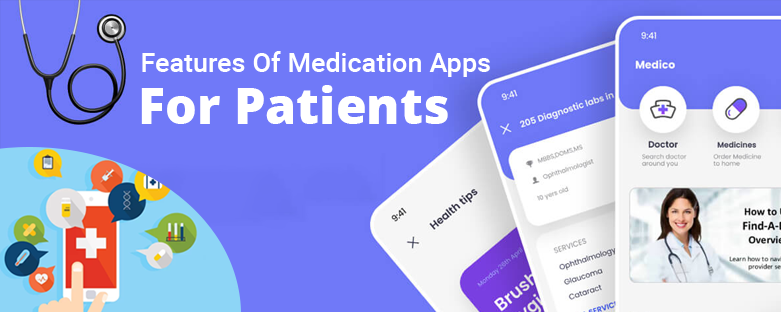Improving adherence to patient medication apps is a common problem for physicians. Non-adherence to medication costs our health care system $289 billion annually and has a negative impact on patient health. A study found that about 50 percent of patients do not take their drugs as prescribed.
You have probably struggled to improve drug adherence as a doctor-your patient fail to take their medication on time or cannot seem to keep their six drugs straight. When basic conditions are not adequately treated or back in the hospital when drug adherence fails at discharge, some patients even end up in urgent care centers.
Since most patients are now users of smartphones, mobile apps can be your secret weapon against non-adherence to medication. Here we are discussing the importance of medication apps for patients.
It is never easy to make sure your loved one takes their medicine. However, to ease the operation, there are prescription notification facilities for seniors. Hundreds of smartphones, mobile apps, and alarm clocks will provide caregivers with the support they need by using the new technology. To ensure that your loved one receives sufficient dosages, we rounded up a few examples.
For medical professionals, medication reminder apps are helpful because these apps give them greater control over the medication management of patients. These applications also allow doctors to provide better care to patients. With the support of experienced healthcare software developers available in the marketplace, such an app can be developed.
Table of Contents
ToggleFeatures of Medication n App for patients
We list some features of medication application that can all be part of one multi functional drug app and explain why it can be beneficial to include this form of a patient app in therapy.
1. Medication plan
The key function of a quality drug app should be the digital scheduling of medication intake. When they can access the data from the schedule, other features become even more helpful and easy to use.
For the sake of protection, healthcare professionals can establish the initial medication plan. Then it can be shared with the mobile device of a patient thus being free to edit for the doctor. Therefore, healthcare professionals and patients can both be on the same page. If a patient wants medication dose change after in-person, they can contact their doctor and have their medication plan checked and modified.
2. Medicine price/area search
Employee medicine apps that enable patients to search for the nearest or most accessible drug store with the appropriate medicine in stock are already common. However, when combined with the purpose of the medication plan, searching becomes even more convenient.
3. Pill identifier app or Drug checker
Checking a vial of pills without labeling or tags is almost difficult for patients. Patients recently want to monitor what kind of pills are in their medication box, as well as obtain some extra information about each individual medicine about the effects and side effects. To solve these challenges, pill identifier applications have been created. These apps have created a large data source of pills that can be easily accessed by patients.
A hundred pill identifier applications with a deferential search interface are currently on the market. Until searching, several applications require users to type many pill attributes, including size, package information, and more. By comparison, modern technology apps just need to upload a picture of browsing drugs. Obviously, image search gives users more ease. This induces greater investment for manufacturers.
4. Prescription Renewal
For both doctors and patients, having prescriptions renewed with a mobile app saves a lot of time. When they receive an email alert that their prescription has expired, patients will be asked to complete the prescription renewal process.
This form will be made available online to the medical practitioner. In the event they have any concerns about their condition, they should contact the patients. Then the doctors will take their time and just deliver the new prescription via the app to the patients. It is easier for patients to either print it out or display it right on the screen of their mobile directly to the drugstore attendant.
5. Alerts/Notification
Timely refill reminders are the next big function that is all about helping consumers to ensure that they do not go out of pills. When it’s time to buy a refill of medication, such a feature gives a warning in advance. This core role is highly recommended during the production of pill reminders and medication tracker apps.
6. Price of medications and availability in drugstores
With the apps, patients do not have to waste a lot of time searching for the prescription. All it takes is to click on the screen to pick a filter to show the cost of the drug (including the most cost-effective offers) and the location of a drugstore from which they can buy it.
7. Reminder of dosage
Many kinds of pills are given to patients with more extensive ongoing therapy. It is hard to recall which pill we should take at what time. By sending a notification to give the name of the pill and the amount, Windows reminders help certain patients. The method for calculating when the stock is exhausted also works with this function.
8. Sharing
When someone else is helping a patient to handle their drugs, sharing is a must. Users will export their schedules to share with family caregivers and physicians through a medication app.




















